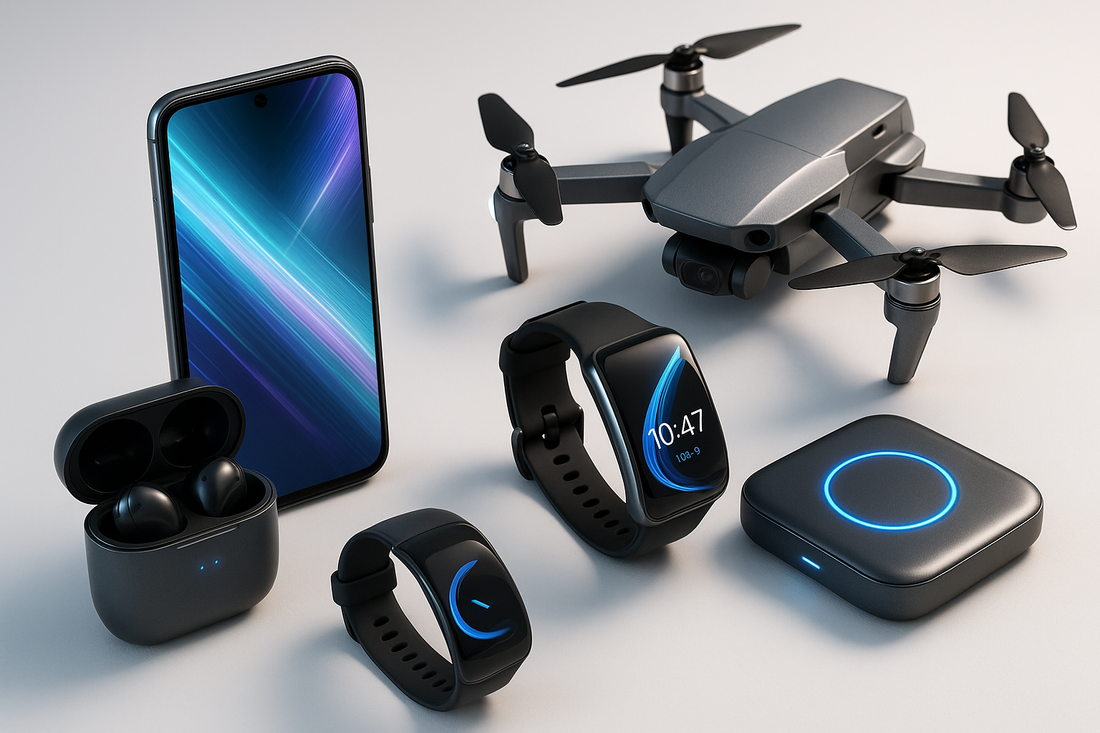
History Of Smart Technology
Share
The Evolution of Smart Home Technology
History, Stats and the Future of Connected Living
The concept of a smart home has fascinated inventors and homeowners for nearly a century. From early visions of automated homes in magazines to AI-driven smart assistants today, the journey of smart home technology showcases human innovation, evolving consumer needs, and the growing role of sustainability. In this guide, we’ll explore the history, key milestones, real-world statistics, and practical insights for modern smart living.
1. Early Concepts and Innovations (1930s–1960s)
The dream of automated living dates back to the 1930s. In 1939, Popular Mechanics published “The Electric House of the Future,” envisioning homes with automated lighting, temperature control, and appliances.
In 1966, the ECHO IV, developed by James Sutherland, became one of the first practical smart home devices. ECHO IV could:
- Control basic household appliances
- Set reminders and shopping lists
- Automate simple routines
2. The Rise of Home Automation (1970s–1990s)
The 1970s and 1980s brought the first commercially available home automation solutions. The introduction of the X10 protocol in 1975 allowed appliances to communicate over power lines, enabling remote control of lights, thermostats, and small devices.
- Early security systems, including motion detectors and surveillance cameras, became integrated with automation systems.
- Adoption was limited due to high costs and technical complexity.
- Homeowners began experimenting with timers and centralized control panels.
3. Internet Age and Modern Smart Devices (2000s–2010s)
The rise of the internet transformed smart home possibilities. Devices became Wi-Fi-enabled, and cloud integration allowed remote control and monitoring from anywhere in the world.
- Smart thermostats like Nest learned user preferences and adjusted temperatures automatically.
- Philips Hue introduced programmable lighting solutions.
- Smart locks and security cameras offered mobile monitoring and alerts.
4. Voice Assistants and AI Integration (2010s–2020s)
Voice assistants revolutionized smart homes:
- Amazon Alexa: Released in 2014, enabled voice control of devices, timers, and music playback.
- Apple Siri: Integrated with iOS and HomeKit for voice-based home automation.
- Google Assistant: Offered cross-device control and AI-driven routines.
AI and machine learning began personalizing automation. Devices now adapt to user behavior, optimize energy usage, and integrate multiple functions seamlessly.
5. Current Statistics & Market Insights (2025)
| Metric | Statistic | Source |
|---|---|---|
| Global Smart Home Market Size | $255.2B by 2029 | sqmagazine.co.uk |
| Compound Annual Growth Rate (CAGR) | 23.5% | sqmagazine.co.uk |
| Top Reason for Adoption | Energy efficiency (56%) | sqmagazine.co.uk |
| Second Reason | Convenience (47%) | sqmagazine.co.uk |
| Consumer Security Concerns | 39% of users cite security as a top factor | sqmagazine.co.uk |
| Device Preference | Multi-function hubs (49%) | sqmagazine.co.uk |
6. The Future of Smart Home Technology
Looking forward, smart homes will become more intuitive, sustainable, and integrated. Emerging trends include:
- AI-driven personalization for lighting, climate, and entertainment
- Energy optimization through smart grids and renewable energy integration
- Enhanced security with facial recognition and anomaly detection
- Multi-device ecosystems for seamless control of every aspect of the home
7. Practical Tips for Modern Homeowners
Whether you’re a first-time smart home adopter or upgrading existing systems, consider these practical tips:
- Start with a central hub or smart assistant for unified control.
- Choose energy-efficient devices like smart thermostats and LED lighting.
- Integrate water-saving technologies such as smart irrigation.
- Update software regularly to enhance security and efficiency.
- Consider eco-friendly gadgets that reduce electricity and resource consumption.
8. Recommended Smart Home Gadgets
- Smart Hubs & Controllers — centralize device management with voice or app control.
- Energy-Efficient Devices — thermostats, smart plugs, and lighting solutions.
- Home Security & Surveillance — cameras, smart locks, and sensors.
- All Smart Home Gadgets — explore our full range of connected home technology.
9. Timeline: Key Milestones in Smart Home Evolution
- 1939: “Electric House of the Future” article in Popular Mechanics
- 1966: ECHO IV – early automated home device
- 1975: X10 protocol for appliance communication over power lines
- 1980s: Integrated security systems with motion detection
- 1990s: Internet-enabled devices and early IoT experiments
- 2000s: Smart thermostats, lighting, and locks hit the consumer market
- 2010s: Amazon Alexa, Google Assistant, and AI integration
- 2020s: Machine learning, energy optimization, and multi-device ecosystems
- 2025+ Predicted growth in sustainability-focused and AI-driven smart homes
10. Conclusion
The evolution of smart home technology demonstrates how visionary concepts, technical innovation, and consumer demand converge to create the connected homes we enjoy today. From ECHO IV to AI-driven assistants, each milestone has improved convenience, energy efficiency, and security. Understanding this history helps homeowners make informed decisions and embrace the sustainable, intelligent homes of the future.
